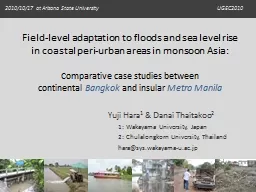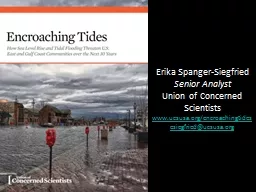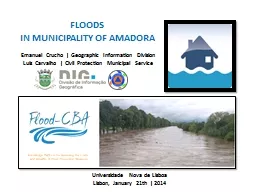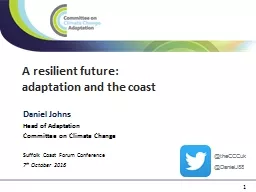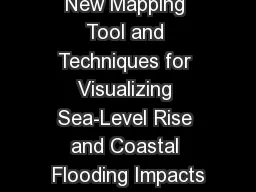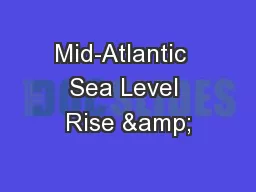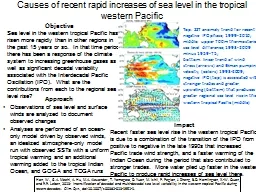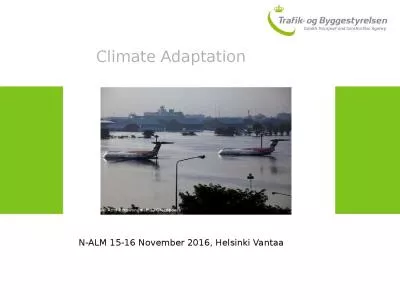PPT-Field-level adaptation to floods and sea level rise in coas
Author : tatiana-dople | Published Date : 2017-05-08
Comparative case studies between continental Bangkok and insular Metro Manila Yuji Hara 1 amp Danai Thaitakoo 2 1 Wakayama University Japan 2 Chulalongkorn University
Presentation Embed Code
Download Presentation
Download Presentation The PPT/PDF document "Field-level adaptation to floods and sea..." is the property of its rightful owner. Permission is granted to download and print the materials on this website for personal, non-commercial use only, and to display it on your personal computer provided you do not modify the materials and that you retain all copyright notices contained in the materials. By downloading content from our website, you accept the terms of this agreement.
Field-level adaptation to floods and sea level rise in coas: Transcript
Download Rules Of Document
"Field-level adaptation to floods and sea level rise in coas"The content belongs to its owner. You may download and print it for personal use, without modification, and keep all copyright notices. By downloading, you agree to these terms.
Related Documents

